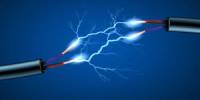Introduction
The transition to a more automated grid in pursuit of environmental, efficiency and resilience benefits entails changes and enhancements across the grid value chain, from how the electricity supplier operates, to how the network is structured, to how the end user interacts with the grid infrastructure. These changes can be organized into five broad categories, and constitute the smart grid’s key characteristics or “capabilities”.
Demand Response
This capability refers to the capacity of the user or operator to adjust the demand for electricity at a given moment, using real-time data. Demand response can take the form of active customer behavior in response to various signals, generally the price of electricity at the meter, or it can be automated through the integration of smart appliances and customer devices which respond to signals sent from the utility based on system stability and load parameters. For example, a residential hot water heater could be turned off by a utility experiencing high electricity loads on a hot day, or could be programmed by its owner to only turn on at off-peak times. Active demand management can help smooth load curves, which in turn can reduce the required reserve margins maintained by electricity generators. Some pilot projects can already claim results in this respect: the Olympic Peninsula Project, overseen by the Pacific Northwest National Laboratory on behalf of the US Department of Energy, dropped peak power usage by 15 percent. A similar project from Constellation Energy in Baltimore, Maryland, cut peak power demand by at least 22 percent and as much as 37 percent. These capabilities have been rolled out in several Canadian jurisdictions to date; however the value of this technology depends on a number of factors. The rest, of course, is customer take-up. If electricity customers do not sign up for voluntary utility load control programs or do not purchase the smart appliances and devices required, demand response programs will have little effect. Additionally, if the generating mix in a particular jurisdiction allows it to economically adapt to electricity demand, the value of demand response programs is diminished. In Alberta, for example, the average power divided by the peak power output, or “load factor”, for the province is about 82%, which is quite high. As such, the value of peak shaving programs is diminished as compared to other Canadian jurisdictions with load factors below 82%.It is important to note that demand response and energy conservation are not one and the same. Successful demand response smoothes out consumption levels over a 24-hour period, but does not encourage decreased consumption. Smart grid technologies that promote a reduction in the use of electricity include the Advanced Metering Infrastructure (AMI) and the Home Area Network (AM), both of which allow for increased customer control over their energy use.
Facilitation of Distributed Generation
Some in the industry refer to the combined optimal management of both to be the “achievement of flow balance.” Traditionally, the grid has been a centralized system with one way electron flows from the generator, along transmission wires, to distribution wires, to end customers. One component of the smart grid allows for both movement and measurement in both directions, allowing small localized generators to push their unused locally generated power back to the grid and also to get accurately paid for it. The wind and the sun, however, generate energy according to their own schedule, not the needs of the system. The smart grid is meant to manage intermittency of renewable generation through advanced and localized monitoring, dispatch and storage.
In Ontario, the Energy Board has directed that it is the responsibility of the generator to mitigate any negative effects that connected supply may have on the distribution grid in terms of voltage variances and power quality. The optimal solution set to accomplish this, however, is still being examined. In addition to intermittency challenges, distributed generation can cause instances of “islanding” in which sections of the grid are electrified even though electricity from the utility is not present. Islanding can be very dangerous for utility workers who may not know that certain wires have remained live during a power outage. Ideally, real time information will allow islanded customers to remain in service, while posing no risk to utility workers. Again, the automation afforded by the smart grid offers a means to this end. When Louisiana was hit by Hurricane Gustav on September 1, 2228, an island was formed of about 225,222 customers who were disconnected from the main electricity grid. According to Entergy, the responsible utility, “synchrophasors installed on key buses within the Entergy system provided the information needed for the operators to keep the system operating reliably.”8 This technology saved the utility an estimated $2-$3 million in restoration costs, and kept all customers in service (thereby avoiding economic losses to regional businesses).
Facilitation of Electric Vehicles
The smart grid can enable other beneficial technologies as well. Most notably, it can support advanced loading and pricing schemes for fuelling electric vehicles (EVs). Advanced Metering Infrastructure would allow customers to recharge at off-peak hours based on expected prices and car use patterns, while bidirectional metering could create the option for selling back stored power during on-peak hours. Although significant EV penetration is still a medium to long-term projection, some cities and regions have started experiments and the existence of a smart grid is essential to their uptake. This area of the smart grid provides an illustrative example of the potential risk to utilities of getting caught in the middle. Many policy makers and car manufacturers correctly point out that widespread charging infrastructure may help incent customers to switch to electric vehicles. While this is true, we must recognize that charging infrastructure alone may not be enough to change customer behavior; until a breakthrough technology is discovered by the automotive industry, electric vehicles will still have relatively high price tags and limited range. As such, prudence dictates that utility investments in EV infrastructure ought to respond to the automotive purchasing patterns of their customers rather than laying the groundwork for a fuel switch that is still largely dependent on technological breakthroughs. If utilities invest in infrastructure now, and the EV market takes longer than promised to develop, customers may not feel well served.
Optimization of Asset Use
Monitoring throughout the full system has the potential to reduce energy losses, improve dispatch, enhance stability, and extend infrastructure lifespan. For example, monitoring enables timely maintenance, more efficient matching of supply and demand from economic, operational and environmental perspectives, and overload detection of transformers and conductors. Or as Miles Keogh, Director of Grants and Research at the National Association of Regulatory Utility Commissioners in the US, argues in a recent paper, system optimization can occur “through transformer and conductor overload detection, volt/var control, phase balancing, abnormal switch identification, and a host of ways to improve peak load management.” Thus, as he concludes, “while the smart meter may have become the ‘poster child’ for the smart grid, advanced sensors, synchrophasors, and distribution automation systems are examples of equipment that are likely to be even more important in harnessing the value of smart grid.
For example, smart grid monitoring helps utilities asses their line proximity issues as it relates to trees and tree growth, because dense growth results in a significant increase in the number of short voltage blips that occur. Early detection of these short line contacts by trees will assist utilities in their “just in time” tree programs, effectively focusing crews on the correct “problem areas”.
In addition, network enhancements, and in particular improved visualization and monitoring, will enable “operators to observe the voltage and current waveforms of the bulk power system at very high levels of detail.” This capability will in turn “provide deeper insight into the real-time stability of the power system, and the effects of generator dispatch and operation;” and thereby enable operators to “optimize individual generators, and groups of generators, to improve grid stability during conditions of high system stress.”
Problem Detection and Mitigation
Many utility customers do not realize the limited information currently available to grid operators, especially at the distribution level. When a blackout occurs, for example, customer calls are mapped to define the geographic area affected. This, in turn, allows utility engineers to determine which lines, transformers and switches are likely involved, and what they must do to restore service. It is not rare, in fact, for a utility customer care representative to ask a caller to step outside to visually survey the extent of the power loss in their neighborhood. It is a testament to the high levels of reliability enjoyed by electric utility customers that most have never experienced this; however, it is also evidence of an antiquated system. While SCADA and other energy management systems have long been used to monitor transmission systems, visibility into the distribution system has been limited. As the grid is increasingly asked to deliver the above four capabilities, however, dispatchers will require a real-time model of the distribution network capable of delivering three things:
- Real-time monitoring (of voltage, currents, critical infrastructure) and reaction (refining response to monitored events);
- Anticipation (or what some industry specialists call “fast look-ahead simulation”);
- Isolation where failures do occur (to prevent cascades).
On any given day in the United States, roughly “522,222 U.S. customers are without power for two hours or more” are costing the American economy between $72 and $152 billion a year. This significant impact on economic activity provides a strong incentive to develop the smart grid, which is expected to reduce small outages through improved problem detection and isolation, as well as storage integration. It is also expected to reduce the likelihood of big blackouts, such as the infamous 2223 blackout that impacted most of the Eastern seaboard. The 2223 blackout left more than 52 million people without power for up to two days, at an estimated cost of $6 billion, and contributed to at least11 deaths. A root cause analysis revealed that the crisis could not have begun in a more innocuous way: a power line hit some tree branches in northern Ohio. An alarm failed to sound in the local utility, other lines also brushed against trees, and before long there was a cascade effect a domino of failures—across eight US states and one Canadian province. With proper monitoring, now capable through smart grid innovations, some proponents believe that a cascading blackout mirroring that of 2223 should become so remote a possibility as to become almost inconceivable. Intelligent monitoring on a smarter grid allows for early and localized detection of problems so that individual events can be isolated, and mitigating measures introduced, to minimize the impact on the rest of the system. The current system of supervisory control and data acquisition (SCADA), much of it developed decades ago, has done a reasonably good job of monitoring and response. But it has its limits: it does not sense or monitor enough of the grid; the process of coordination among utilities in the event of an emergency is extremely sluggish; and utilities often use incompatible control protocols—i.e. their protocols are not interoperable with those of their neighbors. If Ohio already had a smart grid in August 2223, history might have taken a different course. To begin with, according to Massoud Amin and Phillip Schewe in a Scientific American article, “fault anticipators… would have detected abnormal signals and redirected the power… to isolate the disturbance several hours before the line would have failed.” Similarly, “look-ahead simulators would have identified the line as having a higher-than-normal probability of failure, and self-conscious software would have run failure scenarios to determine the ideal corrective response.” As a result, operators would have implemented corrective actions. And there would be further defiance’s: “If the line somehow failed later anyway, the sensor network would have detected the voltage fluctuation and communicated it to processors at nearby substations. The processors would have rerouted power through other parts of the grid.” In short: customers would have seen nothing more than “a brie flicker of the lights. Many would not have been aware of any problem at all.”19 Utility operators stress that the smart grid does not spell the end of power failures; under certain circumstances such as these, however, any mitigation could prove very valuable indeed. A more reliable grid is also a safer grid.
First, as discussed previously, smart grid technology allows for “anti-islanding” when needed. Detection technology can ensure that distributed generators detect islanding and immediately stop producing power.
Second, power failures can leave vulnerable segments of the population, such as the sick or elderly, exposed to the elements or without power required by vital medical equipment. Third, safety is also enhanced through electricity theft reductions. As BC Hydro points out, “energy diversions pose a major safety risk to employees and the public through the threat of violence, fire and electrocution.”
Working Principal of Smart Grid
Smart grid technology is a new system of monitors that foster communication between the energy company and the end consumer. Electricity is sent from the energy company to a distribution center where it can later be sent to different destinations based on need. Power lines run from the distribution to the consumer and these lines include sensors that send information back to the energy company, giving them an idea of where electricity is being sent and how much electricity is being sent to a given destination. This allows energy companies to track areas of high use, identify possible outages, and provide the proper service. On the consumer end, businesses install monitors that register how much electricity is coming in and being used. Businesses can store unnecessary electricity in batteries and later redirect the electricity, through the same lines, back to the energy company. The energy company can use this electricity to provide service at peak times without physically generating more electricity at the plant.
According to the United States Department of Energy, there are five fundamental technologies that will drive smart grid technology:
- The cohesion of every part of the system which allows every part to communicate with real-time information and control.
- Communication technology that promotes more accurate information and hence response time. These technologies include: remote monitoring, time-of-use pricing, and demand-side management.
- Research and development in the areas of: superconductivity, storage, power electronics, and diagnostics.
- Advanced control methods which enable better response, diagnostic, and solutions.
- Improve interfaces and decision support to amplify the decision-making power of human.
Significance of Smart Grid
Smart-grid is a revolutionary technology which has a direct impact on the lifestyles of individuals and is thus, ground-breaking. Smart grids will allow consumers to be more conscious of power needs and be able to conserve electricity easier and better manage electricity to save costs. Moreover, it will involve the consumer in the process of power generation by allowing him to directly indicate the need for electricity. Customers can also be rewarded by being paid for electricity they save and sell to electric companies.
The two-way communication system will enable generation resources that will allow small entities such as homes and individuals to sell power to their neighbors or send it back to the grid. This will change the competitive landscape of energy companies.
Avoid natural disaster disruptions: The smart-grid will allow operators to bypass a particular area where the power went out and still retain power in the rest of the circuit by reprogramming it. Therefore, a lightning strike on a pole will not result in a power failure in the region around it.
Enabling electricity markets: Bulk transmission of electricity will require more grid management. Better grid management will allow alternative energy sources to be distributed across distances to customers regardless of their location.
Downsides of Smart Grid
Just as with any other technology, the smart grid technology has some drawbacks. One of the major disadvantages of smart grids is that it is not simply a single component that consists of the technology. There are various technology components such as: software, the power generators, system integrators, etc. Not every company is on a level playing field to take the risks necessary to build a smart grid. This is the reason many utility companies refrain from venturing into this area. They want other companies to take the risk so that they can follow later, safely. Infrastructure requirements are another major challenge. In the US, the wall sockets cannot be the basis for grid computing. For smart grids, there is a need for access points that can be identified for data and information transfer between the point of usage and the power generating system. This is very similar to a computer access point, which enables a connection to the internet. This need for a two-way communication mechanism is crucial and investment-intensive.
Distributable power is the key to smart grids. The technology exists for centralized generation and distribution but only in one direction – from the electric provider to the customer. This poses a challenge to establish smart grids that need to distribute power effectively on a platform which is more diverse and easily distributable – not necessarily centralized.
Convenience of Smart Grid
Traditionally, electricity has been delivered via a one-way street: Energy from a big, central station power plant is transmitted along high-voltage lines to a substation, and from there to our house. A smart grid turns those lines into a two-way highway.
Wireless smart meters measure and communicate – in real time – information about how much energy we’re using and what it costs, allowing us to better manage our consumption, carbon footprint and bill.
For example, we’ll be able to use our smart phone to tell our water heater to turn off when we leave the house in the morning, and turn back on a half hour before we arrive home in the evening. This could save a lot of energy and money, given that about one quarter of the electricity we pay for is wasted because our household appliances operate when they’re not needed.
Benefit of Customers due to Smart Grid
Once the Smart Grid is completely built, much of the work historically performed manually including meter reading and power outage reporting, will be handled through near real-time communications between components on the electric “grid” itself, customers and service provider employees.
This means provider will know instantly when power outages occur, rather than relying on customers to report them. The faster the provider know there is an outage, the faster they can get it fixed, which means that customer inconvenience or loss of production is reduced. The provider will be able to react automatically to some types of power outages, re-routing power and reducing outage restoration time to seconds for many customers rather than minutes or hours. The provider will also be able to help customers manage their energy usage, as they’ll be able to alert customers when there are unusual spikes in their power consumption before those spikes result in a higher-than-expected bill. The cost to generate electric power can vary from season to season, day to day or even hour to hour. Today most electric customers are unaware of this because we all pay one flat rate for each kilowatt hour of electricity used, no matter when we use it. But the fact is that, with our Smart Grid in place, the providers will be able to offer customers options to choose to pay lower electric rates when it is less expensive to generate power and higher rates when it is more expensive to generate power. With near real-time data available through smart meters, customers will be able to make choices about when to use electricity, thus better managing their electric use and budgets without sacrificing comfort and convenience. This communication between components of the electric grid, customers and service providing company personnel will also allow the providers to have greater operational efficiencies, which in turn can help allow them to go longer without an imposed rate increase. Things like reduction in power theft and automatic meter reading go straight to helping them keep their operations costs low.
Smart grid Advantages
Consumer Benefits
- Better information on how consumer use energy which will allow them to change their energy use so that they spend less and reduce their energy footprint.
- It will allow them to generate their own electricity.
- It will mean that the costs of upgrading our infrastructure to meet the needs of the country are minimized and energy price increases are minimized.@
Operational Efficiency
- Integrate distributed generation
- Optimize network design
- Enable remote monitoring and diagnostics
- Improve asset and resource utilization
Energy Efficiency
- Reduce system and line losses and reduce the price of electricity
- Enable DSM offerings
- Improve load and VAR management
- Comply with state energy efficiency policies
Smart grid technologies will be able to deliver energy efficiencies through, amongst other things:
- Energy usage understanding;
- Peak demand control;
- Advanced metering infrastructure (AMI);
- Automated energy system operation.
Smart grid technologies will build a partnership between consumers and the energy supplier to enable the supply and delivery of energy in the most cost efficient manner so that we achieve the growth of the economy that we all need with the smallest impact on the environment.
Customer Satisfaction
- Reduce outage frequency and duration
- Improve power quality
- Enable customer self-service
- Reduce customer energy costs
“Green” Agenda
- Reduce GHG emission via DSM and “peak shaving”
- Integrate renewable generating assets
- Comply with Carbon/GHG legislation
- Enable wide adoption of PHEV (plug-in hybrid electric vehicle)
Summary
The transition to a more automated grid in pursuit of environmental, efficiency and resilience benefits entails changes and enhancements across the grid value chain, from how the electricity supplier operates, to how the network is structured, to how the end user interacts with the grid infrastructure. These changes can be organized into five broad categories, and constitute the smart grid’s key characteristics or capabilities.
















